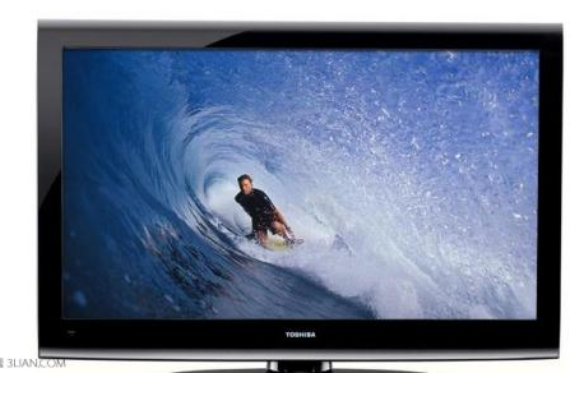After the news that Huawei, OPPO, and vivo will enter the TV industry, OPPO and vivo have denied this, and Huawei has not confirmed the news. But if Huawei is really sure to make a TV, the editor will not be surprised.
As early as at the Huawei DigiX2018 Huawei Terminal · Global Partners and Developers Conference held on June 22 this year, Yu Chengdong elaborated on Huawei's new strategy for consumer business: a full-scenario smart life ecological strategy. All-scenario smart hardware includes mobile phones, tablets, PCs, wearables, TVs, speakers, car machines, and pan-IoT lighting, security, monitoring, etc., building several major scenarios for automobiles, homes, offices, and sports and fitness.
In the strategy of creating a full-scenario smart life ecological strategy, at least Yu Chengdong said that TV is needed. In terms of building a smart life ecology, both Xiaomi and the previous LeTV are unswervingly making TV. Nowadays, it is not surprising that Huawei, which also wants to build a smart life ecology, has to do TV. After all, TV is a key part of smart life.

The full-scenario intelligent revolution has become the overall strategy of Huawei's consumer business. In other words, TV is one of Huawei's strategic needs.
In addition to strategic needs, Huawei's TV production also has advantages that other mobile phone manufacturers do not have.
In recent years, with the substantial price cuts and popularization of Internet 4K TVs, people’s understanding of 4K TVs has gradually deepened, but more of them are in the panel, while video chips that support 4K imaging are rarely known. The complete video processing flow includes four parts: video capture, video processing, video transmission, and video display. Except for the display panel that can directly affect the look and feel, every link is closely linked. Among them, the most important thing is video processing, which includes video codec, video image de-interlacing, video format conversion, etc. The core of the quality of video processing lies in the performance of the chip.
In the field of smart phones, Huawei's HiSilicon Kirin processor has been widely known. In fact, in the TV field, Huawei HiSilicon has a layout, and its current domestic market share is not small.
Before 2010, domestic self-developed chips were basically in the prototype or self-use stage, and the market acceptance was very low. At that time, domestic chips accounted for only about 1%, and foreign chips accounted for more than 95%. In particular, TI occupied almost half of China's market. The main reason is that foreign manufacturers have accumulated rich experience, have been cultivating in this field for many years, are familiar with the characteristics of the industry, and the stability of domestic chips needs to be improved. Therefore, manufacturers in the application video industry basically only considered foreign chips in their selection of chips at that time, and the selection of domestic chips was rare. However, the situation has changed a lot in the past two years. According to Zhang Yi, chief analyst of iiMedia Consulting, Chinese companies represented by Huawei HiSilicon and Vistar Microelectronics are emerging, and Huawei HiSilicon’s "counterattack" in the field of video chips. It broke the monopoly of foreign giants, lowered the overall price of mid-to-high-end chips, and put "China Chip" in products of many brands.
According to the relevant person in charge of Huawei HiSilicon, its video codec chip system is very comprehensive, ranging from 3518A at 65nm to 3519 at 28nm. Chip products cover the consumer market, commercial market and industry market, with resolutions ranging from D1 to the latest 4K. , The frame rate is up to 60fps.
Huawei HiSilicon’s hi3751V600 and hi3751V510 chips are becoming the "heart" of many 4K brand TVs, including Sharp, Hisense, Konka and many other brands that use HiSilicon chips. And many years ago, this was almost unthinkable. Relevant data shows that the share of domestic chips in the Chinese market has increased to about 60% in 2017, which is 60 times that of 10 years ago, while the share of foreign chips has dropped to about 35%. Huawei HiSilicon occupies more than half of the domestic market. Its independent ultra-high-definition smart TV core chip, which shipped nearly 10 million units in 2016, has entered the supply chain of six major domestic color TV manufacturers.
Since the beginning of 2017, China's color TV market has experienced a continuous decline in scale due to rising raw material prices and the failure of Internet brand low-price strategies. In this context, the structural adjustment of the color TV industry has become the norm, and the color TV giants have upgraded and changed to seek new opportunities. In the editor's opinion, for Huawei, which masters core technology, it has the ability to vertically integrate terminal-software-chips, and has technological advantages that other mobile phone manufacturers cannot match in building smart hardware for smart life.
At the same time, the editor also believes that the current quality of smart TVs is uneven and the homogeneity is serious. Huawei's technical advantages will help it make more differentiated products in such a competitive environment. With the advancement of 5G commercialization, TV, one of the main entrances to smart life, has a large room for innovation under the blessing of 5G network. For Huawei, which has both 5G communication and video processing chip technology, TV is a matter of course. Thing.
In addition, Huawei has many patents on video coding technology, which will not be described here. In short, in terms of TV production, Huawei's technical advantages may exceed the understanding of ordinary people.
RAM/RFM Induction Heating Capacitors
RAM/RFM induction heating capacitors
RAM/RFM Induction Heating Capacitors,Water Pump Capacitor,Water Cooled Condense,Tank Capacitor,RAM/RFM Induction Heating Capacitors
YANGZHOU POSITIONING TECH CO., LTD. , https://www.cnfudatech.com
